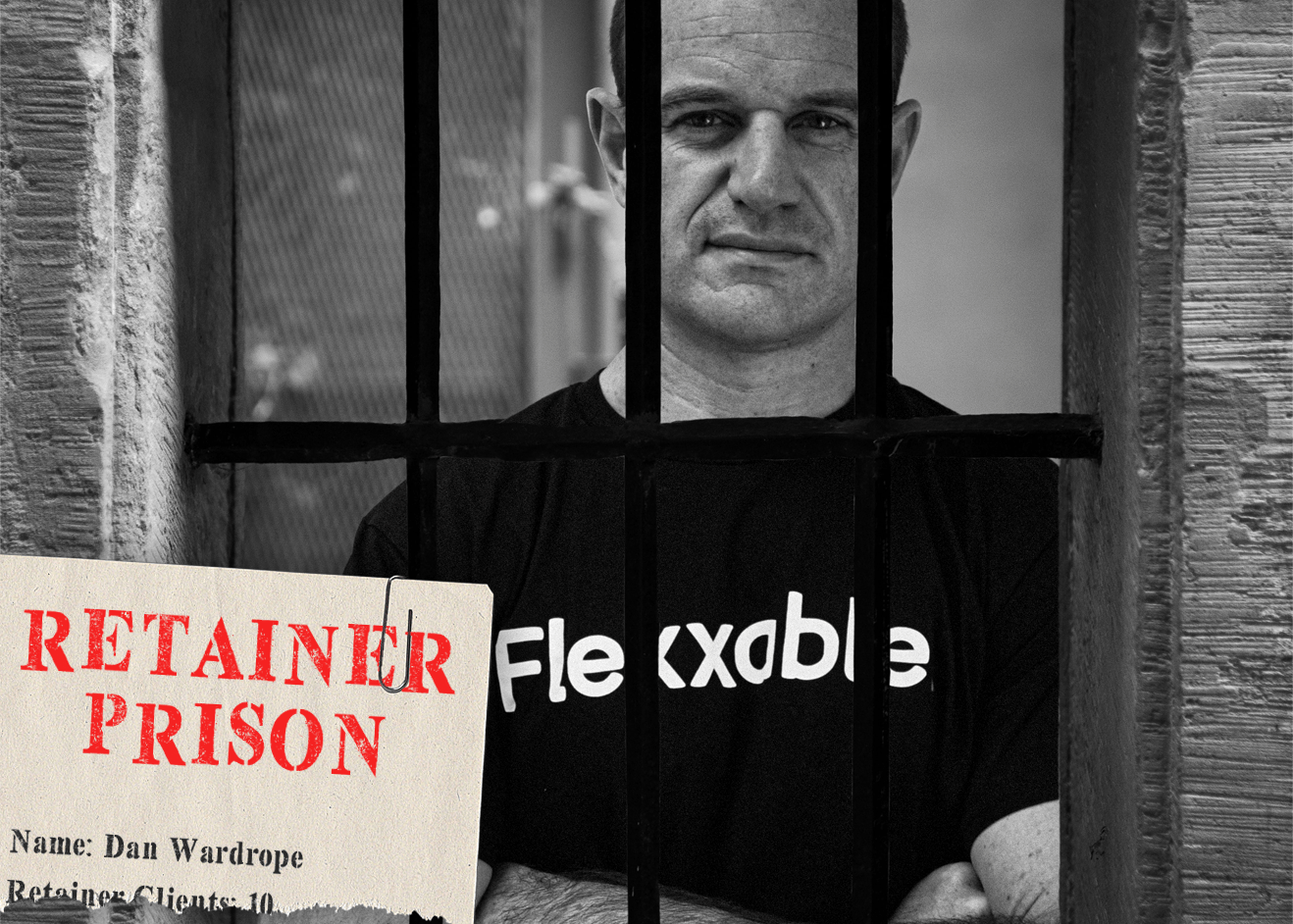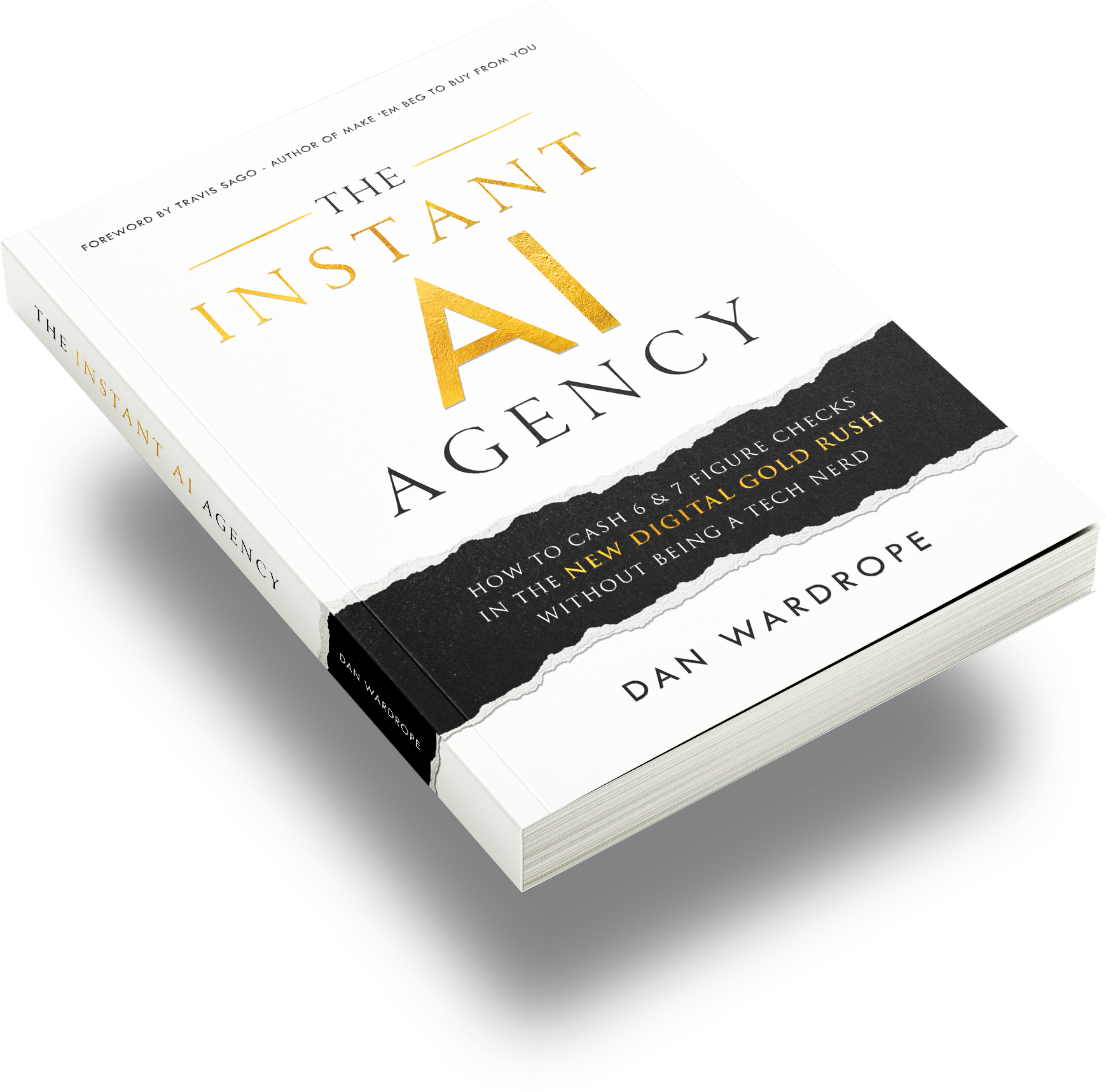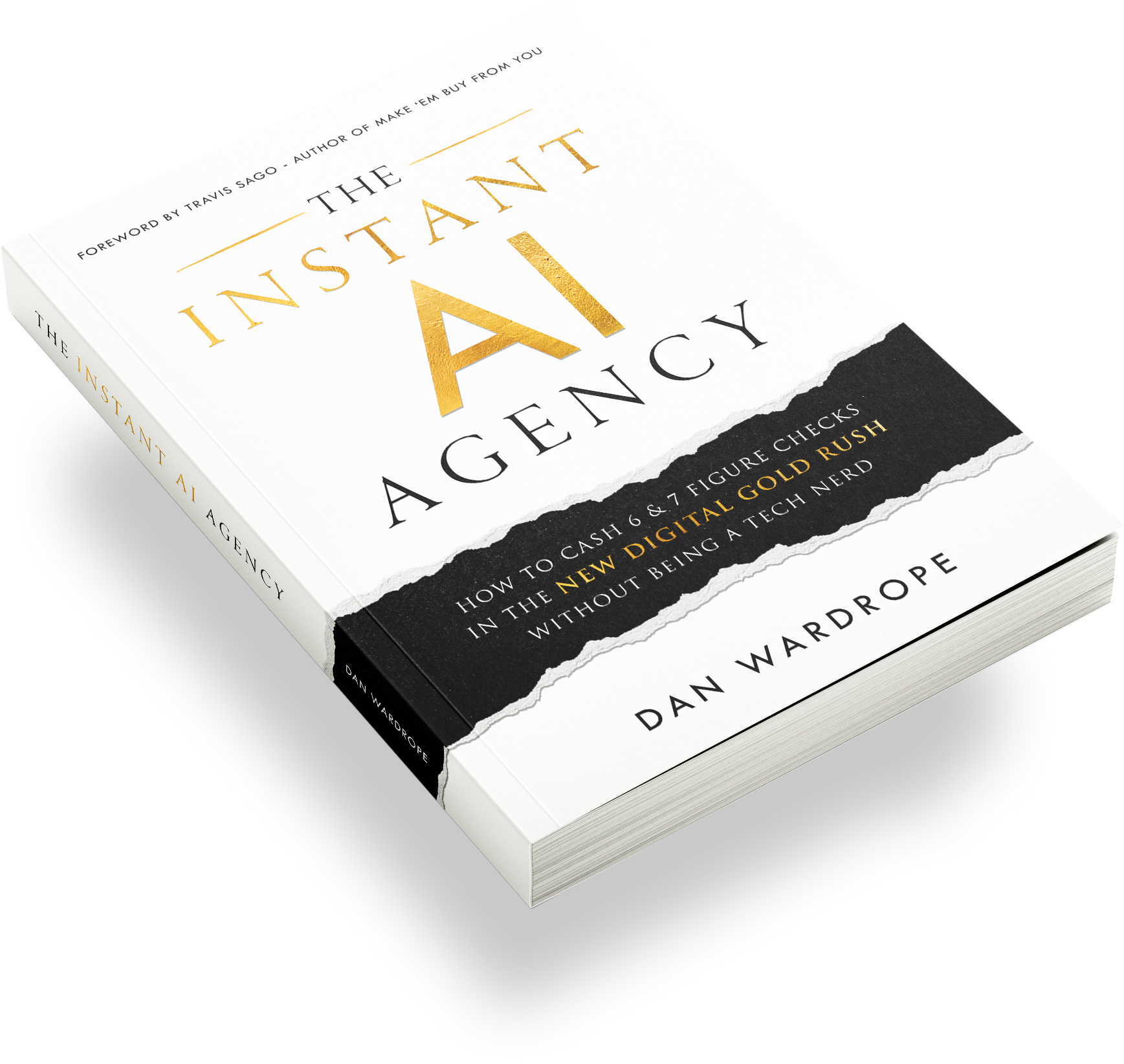One of the most common questions I get asked, by anyone new to the Pay Per Lead model, is: “how do you sell your leads onto clients?”
As you can tell by the title of this post, there’s more than one answer.
I’m going to keep this post relatively short today, as I don’t want to make things over complicated.
So, essentially, there are five different ways of selling leads and all of them can be profitable if they suit the situation you’ve set up with your client.
But first…
What Is The Pay Per Lead Model?
Back when I started with lead generation, I had no choice but to listen to the gurus.
They were all over the internet, telling me what to do and how to do it.
And their No. 1 suggestion – no, their only suggestion – was setting up my agency on the backs of retainer contracts.
Suddenly, I was trapped in the nerve-shattering cycle of cold-calling clients and pitching these retainers.
Every single conversation I had with potential clients went like this:
“Mr or Mrs Client, I need you to sign a three-month contract.”
Then:
“Mr or Mrs Client, I need you to commit to a minimum advertising spend.”
And then:
“Mr or Mrs Client, I’ll have to charge you to fix up your landing pages.”
The lowdown?
I was basically begging clients to hand over a five-figure sum before I’d given the slightest bit of value to their business.
As you can imagine (and, well, I’ve bet you’ve been there), it was a tough sell.
When I did manage to get a client to agree to a retainer, the deal suddenly looked like this:
- I’d accept a fixed sum for the month. Let’s say $1,000. This would be almost impossible to raise once it had been set.
- I’d then spend 10 hours a week on that client. So, $1,000/40 hours for the month = $25 an hour.
- Of course, $1,000 a month wasn’t going to get me by, so I’d have to get more clients, fast. Four clients meant $4,000 per month, working 40 hours a week. That’s $48,000 a year. So far, so okay.
- But wait. I’d work 160 hours a month, for $4,000. Despite quadrupling my workload, I was still only making $25 an hour. I knew 17-year-olds making more than that.
- So, the obvious next step would be to get another member of staff. A good PPC manager costs $40,000 a year, and they could also take on four clients. Great. That means my agency was turning over $8,000 a month, which is $96,000.
- $96,000 – $40,000 (the PPC manager wages) = $56,000 a year. $56,000/12 = $4,667 a month. $4,667/160 (hours worked in a month) = roughly $29 an hour.
Damn.
But wait, there’s more.
As the world and his wife were trying to land clients with retainer contracts they didn’t want, agency owners like me had to bring a million other things to the table to establish their superiority over the other.
I’m talking about stuff like:
- AdWords skills
- Facebook PPC expertise
- CRO skills
- Google Analytics and Google Suite knowledge
- E-Commerce skills
- Autoresponder expertise, like ActiveCampaign and Confusionsoft
- SEO skills
And these clients would get you to do various extra tasks, like SEO, for free, arguing that it was “part of the contract”.
No, no, no, NO.
After months upon months of misery, it finally came to me.
What do these clients want over and above anything else?
Leads. High-quality leads with a decent contact rate percentage. Nothing else.
Once I realised how simple it all was, I decided to counteract retainers with a simple model of my own: the Pay Per Lead model.
Not at all complicated: I would generate leads in a specific vertical for X amount of money, then I’d sell the leads onto the client for X+Y (Y being my profit).
There would be NO contracts.
NO complicated monthly reports.
NO SEO.
If the client ordered 100 leads in a week, then decided they didn’t want to use my services again, there would be no hard feelings.
I’d simply move onto the next client.
And, as I’d be using my own money for the ad spend, for the client, it was risk-free.
They only had to pay me for the leads I provided. No extra costs.
Let’s do the math.
Say I was generating finance leads for $25, then selling those leads onto the client for $100.
The client would pay me up-front for 100 leads a week.
That’s $10,000.
My ad spend would be $25 (cost per lead) x 100 (no. of leads needed), which equals $2,500. $10,000 – $2,500 = $7,500 profit per week.
To get profits like these, I knew I had to work out three things:
- How to find clients who could spend five-figures per week
- How to get very high-quality leads (or the client would stop ordering from us)
- What my cost per lead was going to be, depending on the vertical my client was in
I worked out all of these over time, and voila!
My model may be higher-risk, but it is undoubtedly a higher reward.
And that’s the Pay Per Lead model in a nutshell.
Purely selling leads, and that’s it.
How To Escape "Retainer Prison", Wrestle Back 100% Control Of Your Time AND Give Yourself A Raise By Firing Your 10 Bosses (Clients)

Lemme show you how to fire “pain in the butt” $2,000 a month retainer clients and replace them with $2,000 a DAY Pay Per Lead PARTNERS. Just press the button below quietly (so the warden doesn’t hear) and I’ll slide over my free “Retainer Prison” Escape Plan
#1 Sell Leads Exclusively To One Client
To sell leads this way, I recommend that you have some experience in the vertical under your belt.
This means you know what combination of ads, advertorials, landing pages and quizzes work.
You’ve been in the field for a while, and your creative prowess is red hot.
If you haven’t got the required experience, try testing it out on “smaller” businesses first.
These could be your dentists or your gyms.
They’re not great money-spinners, but they’re excellent practice for when you go after the big boys.
So, pretty easy.
A client will ask you for 100 leads a week, 200 leads a week or 1000 leads a week.
Basically, as many as you can manage.
You work out the cost per lead to be about $10 a lead.
The client agrees to buy each lead for $25.
They’ll pay you up-front, of course.
I always ask for the money to be in my account by Friday, then I’ll switch on the ads the following Monday.
No money? No ads.
Now, all the leads you generate are for that client only.
You can’t sell the leads to anyone else, and you have no rights to them after they’ve been produced.
If the client orders 200 leads a week at $25, costing you $10 a lead, then…
You’ll be making a profit of $3,000 a week.
Theoretically.
However, sometimes life can be against you, and you’ll be generating leads over your budget.
I hate it when that happens.
So, if you thought you could get $10 leads, but the leads are actually costing you $20, then, of course, you’ll only be making $1,000 a week in profit.
And yes, losing money, which is why I recommend selling leads with this method if you’ve got experience in the vertical.
Still, done correctly, this is certainly could be the most profitable method out there.
#2 Sell The Same Lead To Multiple Clients
A bit more complicated, and we don’t really do it, but…
Say you have five clients, all working in the same verticle (niche).
You could set a price per lead, say $30, then sell that lead to all those clients.
After that, the lead is out of your hands.
Once the clients have bought the lead, it’s up to them to close it.
Whichever client has the best follow-up strategy gets to keep that lead.
They’re the “winner”, so to speak.
It keeps clients on their toes, for sure.
Still, the other four clients don’t technically “lose out”.
It works on the same basis – the client can close the lead, or they can’t.
They still have to pay for any leads they can’t close.
#3 Sell Leads Exclusively For X Number Of Days Then Open Them Up To Anyone
Cool, so this method is kind of a hybrid between methods one and two.
You’ve got your lead for $10, and you sell it onto a client exclusively for $20. However, this time, you have control over the lead if the client can’t close it over X number of days. Let’s say seven, which is plenty of time to close a lead.
Unless the client has a pretty nifty nurture sequence, they’re not really losing out. Any lead that wasn’t closed after seven days (when the follow-up process tends to flag), would have gone to waste.
You can now take that lead and open it up to other buyers. As it’s seven days old (and seven days cold!), there’s no way you can sell it for $20 again.
However, you can sell the lead to a specialist company for the vastly reduced price of two or three dollars. They’ll have a crack at it and, if it turns out to be “uncloseable”, well. They only spent $3.
This method may sound like you’re scrapping around for pennies, but think a bit bigger. Say a couple of clients have a handful of leads they can’t close. Selling 50 to 100 leads to a specialist company for $3 per lead means an extra $150 to $300.
This is on top of the original payment made by the client who bought leads exclusively in the first place.
Whisper it with me: “Mooooooney…”
#4 Sell Leads On A Back-End Deal
If you’re going to use this method, you’ve got to have faith in your leads.
So, selling leads on back-end deal, you’re paying for the advertising out of your own pocket. You think you can get 100 leads in that niche for $30 a lead, so you spend $3,000 on Facebook ads.
You then send those 100 leads to the client. Out of those 100 leads, the client manages to convert ten. Not many, huh?
BUT those leads are worth a lot of money to the client. If each converted lead brings the client $20,000, they’ve made a whopping $200,000 out of your leads. As a lead conversion is worth so much, the client agrees to pay you $1,000 per converted lead.
So, with 10 converted leads, that makes $10,000. Minus your ad spend, and you have managed to sell those leads for a total profit of $7,000.
Fine. But there are issues.
1. It’s going to take longer for you to get paid with this method. You’ll be spending your own money on ads, then you’ll need to wait around and see what converts.
2. Make sure you really trust this client, or you have access to their CRM so you can see how well the leads are doing. It’s unusual for a client to try and shaft you, but you do hear horror stories.
3. The destiny of your leads is placed in other people’s hands. Say if you handed the client a hot lead worth $1,000, but then the worker at the sales desk has a hangover.
Bye-bye, money.
That said, if you trust your client and you have unshakable faith in your leads, selling leads via a back-end deal could turn out mega, super-profitable.
#5 Sell Leads With A Hybrid Deal
The hybrid deal is an excellent little method that’s perfect for beginners. I used to sell leads on a hybrid deal when I first started. It was profitable for us, and I ended up learning a hell of a lot.
So, yep, the clue’s in the name.
In this kind of deal, the client pays for the advertising spend. Let’s say they’re willing to spend $20,000 a week. For that amount, you run the ads and generate as many leads as you can.
If the client manages to close any leads, you’ll get a fee. Say that closed 200 leads, and they paid you a sum of $100 each. That’s $2,000 profit.
This is a sweet deal, as your money isn’t on the line. If none of those leads convert, you haven’t squandered thousands of pounds.
However, there’s also the matter that if none of those leads convert, you’ll get paid nothing. Again, destiny is placed in the hands of the sales team. Whether in sickness, hangover or a general case of “I can’t be bothered-ness”, a hot lead in the wrong hands is a waste.
Still, this is an ideal selling method for beginners, as you won’t lose any money if things go catastrophically wrong. It’s not as profitable as the exclusive or back-end methods, but you can work your way up to those in time.
Oh – and I just realised. I didn’t keep this particularly short, lol.
Once you’ve sold those leads, you’ll need to deliver them. Read this article here to find out how.
If you are new to all of this and want to know from start to finish how to start and grow a PPL agency, I have a great tool for you.
My book – Take The Lead.
It gives you what you need to grow a PPL agency.
It’s also great for those people who have been running their PPL agency for years but want to know what else they can do to achieve more. Take The Lead will show you how.
Click here to get the book.







